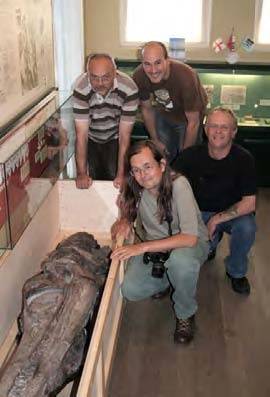Dr Anne Jungblut works in the Antarctic on cyanobacteria - a summary of her recent work is taken from the Botany annual report
The Antarctic is characterized by extreme cold and aquatic ecosystems that are dominated by microbes. Cyanobacteria can be found in polar lakes, ponds and streams, and often dominate total ecosystem biomass and productivity by forming benthic mats and films. These organisms are highly tolerant of the harsh polar conditions and overcome nutrient limitation by recycling and scavenging inorganic and organic nutrients.
In the ice-covered lakes of the Dry Valleys of Antarctica, cyanobacteria-dominated microbial mats form pinnacle structures that are potential analogues to microbialites found in fossil records. However, despite the importance of cyanobacteria to Antarctic ecosystems, ecology and geo-biology, their diversity, community structure and ecology have been little studied.
Two field events took place during the austral summer 2010-2011. The first project aims to evaluate the diversity of Antarctic cyanobacteria along spatial and temporal scales. During the field trip to Antarctica in collaboration with Dr Ian Hawes, Dr Jenny Webster-Brown and Hannah Christenson, University of Canterbury, Christchurch, New Zealand), collection sites were targeted on Ross Island and McMurdo Ice Shelf that were visited by the British National Antarctic Expedition (Discovery Expedition 1901–04), the British Antarctic Expedition (Terra Nova Expedition 1910-13) led by R.F. Scott and the British Antarctic Expedition (Nimrod Expedition 1907-09) led by E. H. Shackleton in order to test how present-day diversity compares with cyanobacterial mat specimens from 100 years ago. The fieldwork was supported by Antarctica, New Zealand and the project “Antarctic Aquatic Inland Ecosystems: Icebased ecosystems” (Project Leader: Dr Ian Hawes).
The second project is in collaboration with Dr Dale Anderson (Principal Investigator, SETI Institute, CA, USA), Dr Dawn Sumner and Tyler Mackey (US Davis, CA, USA) and Dr Ian Hawes (University of Canterbury, Christchurch, New Zealand). The objective is to gain a better understanding of pinnacle formations in cyanobacteria-dominated microbial mats in the perennial ice-covered Lakes Joyce, Vanda and Hoare in the Antarctic Dry
Valley, which will help to interpret ancient microbialite morphology in fossil records. A field event was carried out as part of the US Antarctic Program and supported by research grant from NASA. As part of the fieldwork in the Dry Valleys, pinnacle morphologies were characterized, photosynthesis capabilities examined and cyanobacterial diversity assessed by way of microscopic analysis. Ongoing research in the NHM Botany Department will determine community structure of cyanobacteria within microbialite structures to evaluate the role of cyanobacteria in the formation of microbialite structures, and to study the phylogenetics of cyanobacteria from these unique Antarctic cryo-ecosystems.
Anne wrote a blog on her experiences in the Antarctic - a day-by-day account from the early part of 2011.



